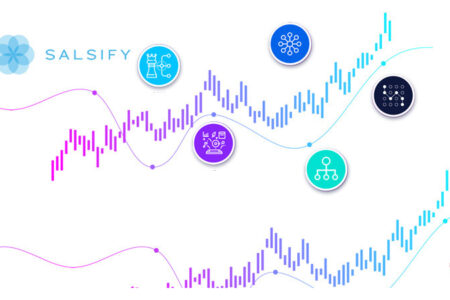With The Extended Pandemic, Supply Chain Issues, Specific Consumer Channels Takes a Back Seat to the Best Product Experience
Salsify, the Commerce Experience Management (CommerceXM) platform empowering brand manufacturers, distributors, and retailers to win on the digital shelf, announced the findings of new consumer research that provides valuable insights on the impact of brand product pages on both in-store and online purchases.
The report, Consumer Research 2022: How to Meet the Demand of Omnichannel Shoppers, also detailed the long-term impact the pandemic has had on the shopping experience in the US, France, Germany, and Great Britain.
A primary takeaway for both brands and retailers is that online product pages dramatically impact online and in-store purchase decisions. According to the report, 46% of shoppers in the US will not buy a product if they don’t find detailed information online. And, 30% say they will not purchase if images are missing or of low quality.
“As economies reopened, the omnichannel experience has evolved,” said Vijayanta Gupta, SVP of Growth Strategy, Salsify. “It’s no longer purchasing in-store or online. Shoppers have blended the experience to create a journey that personally suits them. This has massive implications for omnichannel retailers optimizing the digital shelf to provide access to the information consumers want when they want it through brand pages.”
Also Read: SWIRL Announces Live Shopping Integration with Shopify
Additional findings of the report include:
Brand Trust Surpasses Fast, Discounted Shipping. Forty-five percent of shoppers said they were willing to pay more for a similar product if it came from a brand they trusted, compared with just 30% of shoppers in 2021. However, only 30% said discounted shipping, and 29% said faster shipping was worth a higher price tag.
Omnichannel is the new reality. After a surge of increased online shopping over the last year and a half, shoppers will be browsing and buying both in-store and online over the coming year. 68% of shoppers saying they will purchase in-store, and 56% of that same group saying they will make purchases online through a retailer site.
Supply Chain Woes are Real. In the last three months, 73% of parents said they were impacted by shortages or delays due to shipping, supply, or staffing.
Social platforms emerge as a sales channel for Parents. Half of parents (53%) bought something directly on a social media channel in the last year, compared to just 25% of all non-parents.
New normal of grocery shopping. Sixty-six percent of US shoppers did not buy groceries online before the pandemic. Nearly half of those new to online shopping (47%) say they have already returned full-time to stores (or never stopped going). Another 38% of those new to online grocery shopping have adopted a mix of online and in-store shopping. The remaining 15% have shifted to online-only grocery shopping.
Nearly 5000 consumers across US, UK, Germany, and France were surveyed, and the global report includes data by country. Shoppers’ preferences for high-quality product content and best experience were pronounced on both sides of the Atlantic. Some notable distinctions between countries include:
- 40% of Americans were impacted by supply chain shortages at the end of 2021, compared with only 19% of French buyers. British and German shoppers were also less impacted, coming in at 28% and 29% respectively.
- In each country, a majority of consumers say they choose private label products because of their lower prices. But in the US, liking the retailer brand matters to 37% of those surveyed. In contrast, 8% of the British, 13% of Germans, and 14% of French say that mattered.
- The French are most likely to buy directly on a brand site, with 26% saying that’s how they plan to shop next year – compared with 19% of British, 15% of Germans, and only 13% of Americans
Also Read: Top 5 DevOps Productivity Tools to Scale Your Business

